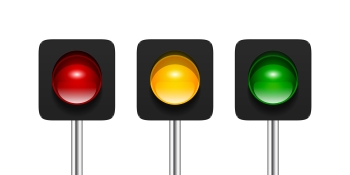
Physical connection is an important part of every partnership and every individual person’s health. Intimacy can take many different forms. Although our culture often holds up penetrative sex as the ultimate physical expression of love, there are myriad ways to demonstrate affection or experience pleasure. It can be hard to remember that intimacy is not limited to penetrative sex if your or your partner are experiencing communication difficulties, genital pain, chronic pain, bedroom boredom, or sexual anxiety.
Good sex doesn’t begin with specific physical activities perfectly executed – good sex begins in the mind. Curiosity, generosity and the ability to clearly communicate with our partners around likes and dislikes are the pillars of intimacy and good sex. This is because every person’s sexual likes and dislikes are different, and can change over time. Your practiced cunnilingus techniques won’t result in good sex if your partner hates to have her clitoris directly stimulated, and the sex will be even worse if she is unable to clearly communicate this to you. Use the activity below to practice talking to your partner about sex, and to expand your “menu” of activities for intimacy and arousal.
1. Write a “Green Light” list
With your partner, write your own individual lists of “Green Light” activities. Green Lights are ways to show love or physically connect that always feel ok. Another way to think of this might be - what are ways you like to give or receive affection when you are in public spaces? This might include – kissing, texting “I love you”, intimate conversations, winking, holding hands, hugging, etc. Try to come up with 30 activities each for this list. Get creative!
Creativity is a useful tool for rebuilding intimacy. So often in long-term relationships we get used to certain formulas for physical affection. “We’ll kiss, then we’ll get into bed and take our clothes off, then she’ll get oral, then I’ll penetrate her and then she’ll come, then I’ll come, then we’ll fall asleep.” Sticking to these scripts can leave us feeling stymied, especially if they are less effective due to pain, trauma or plain old over-use. Thinking outside the box and experimenting with the vast spectrum of places and ways our bodies feel pleasure can help open up new doors to intimacy.
2. Write a “Yellow Light” list
With this in mind, write individual lists of 30 “Yellow Light” activities. Yellow Light activities are sensual ways to give or receive pleasure that do not cause pain, anxiety or discomfort. Yellow Light activities might result in an orgasm, or might not. They could include – massage, showering together, sucking nipples, biting ears, or oral sex. To truly think outside the box, see how many different parts of your body you can involve in this list. If penetrative sex is not a "Red" for either partner, Yellow Light activities may include and can lead to penetrative sex
Red/Yellow/Green Light is useful for generating new options or reminding of us of forgotten favorites. It’s also an important tool for creating boundaries. Without an open conversation and true agreement about what is off limits, it can be hard to enjoy any Green or Yellow activities for fear that they may lead somewhere we don’t want to go. That same old formula for intimacy (kissing àclothes off à oral àvaginal penetration) not only limits our imagination, but trains us to expect a certain order of events. Our bodies and brains get used to kissing always resulting in vaginal penetration. If intercourse is painful for us, we may not be able to fully enjoy kissing or massaging our partner because we are too anxious about what may happen next. In order to fully enjoy things we’ve agreed to, we need to make clear what is off the table.
3. Write a “Red Light” list
Take a minute to write individual lists of any “Red Light” activities. Red Light activities cause pain, discomfort or distress. You might have one, or many. In many relationships, one partner will have more Red Light activities than the other. Do not judge yourself for what you put on this list. You might want to work on moving some things from “Red” to “Yellow”, or you might feel perfectly fine about this list and it may remain unchanged forever. Today, we are focused on defining what is red, rather than changing it. Share this list with your partner.
4. Practice
Agree together to try activities on the Green and Yellow lists. Start slow.
Enact a different Green Activity every day for two weeks.
Complete the following reflection prompts separately, then share together
- You got bored when I _____. Is that right?
- You got scared when I ____. Is that right?
- You got frustrated when I ____. Is that right?
- You weren’t sure how you feel when I ….. Is that right?
- What surprised you the most was …… Is that right?
- You liked it when I ____. Is that right?
- You got turned on when I ____. Is that right?
- You loved it when I _____. Is that right?
Together, reflect: what signals did your partner give to lead you to these conclusions? How often did you interpret their signals correctly? How could you better communicate non-verbally? Some example prompts include:
- It was hard to understand your reaction when ____.
- It was easy to tell what you wanted when ____.
- When you wanted me to stop, you showed me by_____.
- When you were turned on, you showed me by _____.
Add Yellows to the daily Greens, two per week. After one week, use the above prompts to reflect again.
Moving slowly allows us to build trust and see that participating in a Green or Yellow activity will not, in fact, result in a Red. In addition to building trust, practicing with Greens can help us re-train our desire.
As you take on these activities you may find yourself thinking “this is weird” or “sex should be spontaneous - listing out and structuring physical intimacy makes it less sexy.” You may even feel awkward or embarrassed to go through the reflection exercise because the two of you “should already know turn ons and turn offs.” These thoughts are absolutely normal. Acknowledge them, and then set them aside for later. It takes bravery and vulnerability to complete the Red/Yellow/Green light lists and to explicitly reflect on them with a partner. This bravery and vulnerability will lead to better sex. If you would like help deepening you and your partner's capacity for bravery and intimacy, call 215-570-8614 to make an appointment with a therapist today.
One final note: while it is helpful to generate Green and Yellow lists of things that are generally pleasurable to and welcomed by us, these lists are not set in stone. As our bodies age and change, or as we work through our emotions, activities may jump from list to list. Nipple sucking might feel good today, and cause pain tomorrow. If you notice this happening, take a minute to update your lists. It may even be helpful to have monthly list check-ins to see if anything has shifted, or if you have any new things you want to add.
Find a couples therapist near me in Philadelphia, Ocean City, Mechanicsville, Santa Fe by calling 215 922 5683 x 100.























